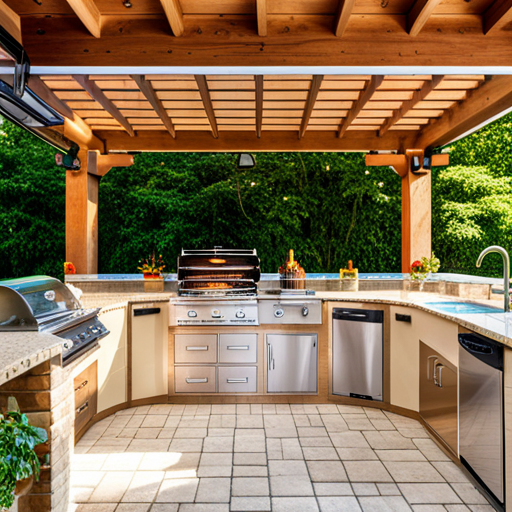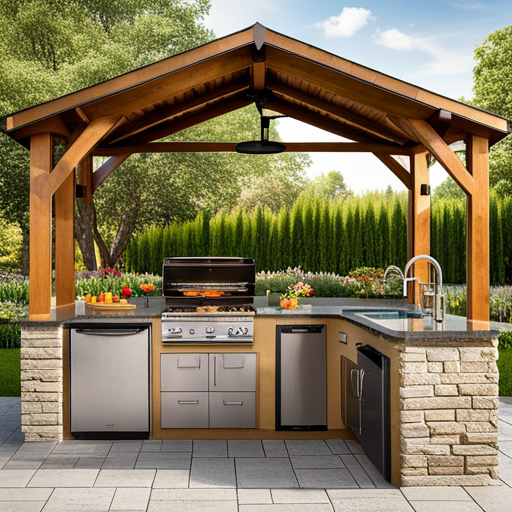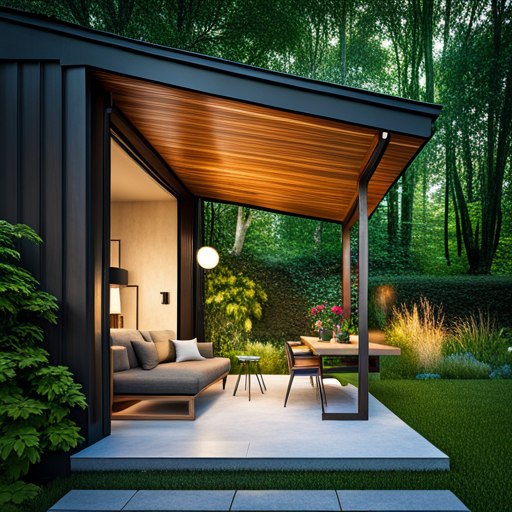Last Updated on June 19, 2024 by John Coleman
Introduction
When summer rolls in with its warm, sunny days, there’s no better place to be than your patio. But too much sun can turn your outdoor haven into a sweltering inferno, making it less enjoyable. That’s where a shade sail for a patio would come in. These stylish, functional additions offer a cool refuge from the glaring sun, transforming your patio into a relaxing, weather-friendly space.
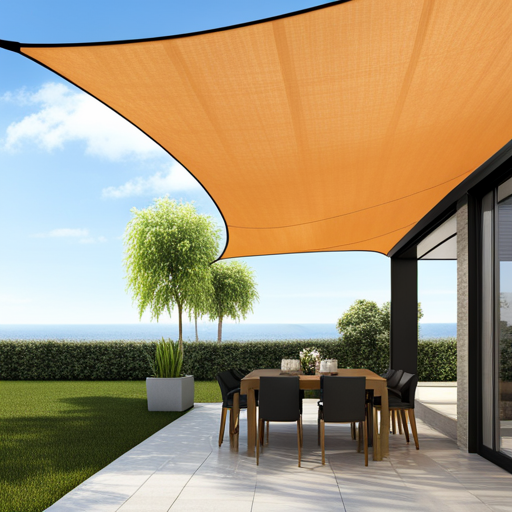
If you purchase through links on this site, we may earn a small commission. See our affiliate disclosure.
What is a Shade Sail For a Patio?
A shade sail for a patio, as the name suggests, is a piece of fabric that’s stretched between a few anchor points to give you some shade in outdoor spaces. It’s a pretty cool investment that comes with a bunch of benefits. Not only does it protect you and your patio furniture from those harmful UV rays, but it also adds a nice touch to the overall look of your outdoor area. Many people choose shade sails as an upgrade from patio umbrellas.
How Much Do Shade Sails for a Patio Cost?
The cost of a shade sail typically ranges from $200 to $2000, depending on the size, material, and quality. A good site to look for a shade sail is Covers & All. They offer competitively priced shade sails in various colors and fabric types in both standard and custom sizes. It’s important to note, that not all shade sails are equal. You want to purchase one made of quality fabric. The good news is, that with proper care and maintenance, a shade sail can last for several years, making it a worthwhile investment for your patio.
What Material to Choose for a Shade Sail
When choosing a shade sail, the material is a crucial aspect to consider. The right material ensures durability, provides adequate UV protection, and requires minimal maintenance. Here are the three most common materials used in shade sails:
- Canvas: Known for its durability and wide range of colors. However, it may require waterproofing treatments and can be prone to mildew if not well-maintained.
- Pros: Durable, wide color range, provides good UV protection
- Cons: May require waterproofing, prone to mildew if not maintained properly
- Polyethylene: UV-resistant and easy to maintain. It’s lightweight and allows for good airflow, but may not be as durable as canvas.
- Pros: UV-resistant, easy to maintain, good airflow
- Cons: It may not be as durable as canvas
- PVC: Offers excellent UV protection and is waterproof. However, it lacks breathability, which could make the shaded area feel warmer.
- Pros: Excellent UV protection, waterproof
- Cons: Lacks breathability
Shade Sails Attached To The House “AKA” Fixed Shade Sails
These are attached to the side of your house using a wall plate or tensioning bolt. They provide shade for areas like patios, decks, and outdoor seating areas close to the house.
Fixed Shade Sails often require a higher level of complexity for installation due to the need for sturdy attachment points on your home. This may involve drilling into the side of your house to secure wall plates or tensioning bolts. This task requires precision to ensure the sail is taut and secure.
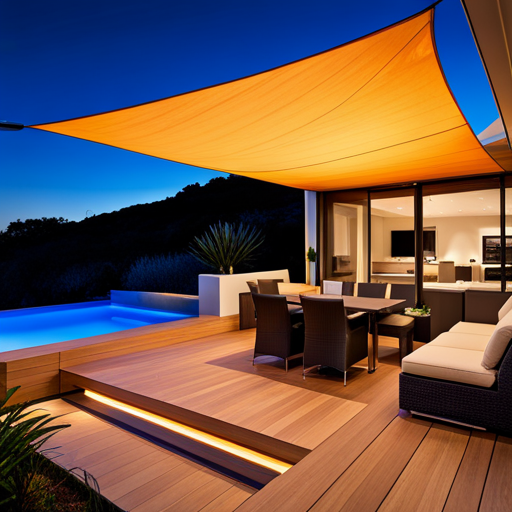
Freestanding Shade Sails
Freestanding shade sails are not attached to any structure and require posts for support. These types of sails are popular for creating shaded areas in the middle of a yard or other open spaces. They offer flexibility and can be easily moved if needed.
Freestanding Shade Sails are generally less complex to install as they are supported by poles rather than attached to a building. Although they still require careful positioning and anchoring, the setup process is less invasive to your home’s structure.

Combination Shade Sails
As the name suggests, combination shade sails combine both fixed and freestanding sails to create a more versatile shade solution. This type of setup is perfect for larger outdoor areas that may require multiple shaded spots.
The installation of combination shade sails usually entails a higher level of complexity. This is because it involves both attaching sails to your home’s structure and setting up freestanding posts for support. In the case of the attachment to the house, it requires accuracy to ensure the sail is taut and firm, which might involve drilling into the exterior wall. Meanwhile, setting up the freestanding posts needs careful positioning and sturdy anchoring to withstand strong winds and support the weight of the sail. Furthermore, careful planning is necessary when installing combination shade sails to ascertain that the shaded areas are strategically placed, optimizing the use of outdoor space while providing maximum sun protection.
Combination Shade Sails gives you the best of both worlds, providing sturdy attachment points and flexible support options. Depending on your needs, you can mix and match different types of sails to create a custom shading system for your outdoor space.
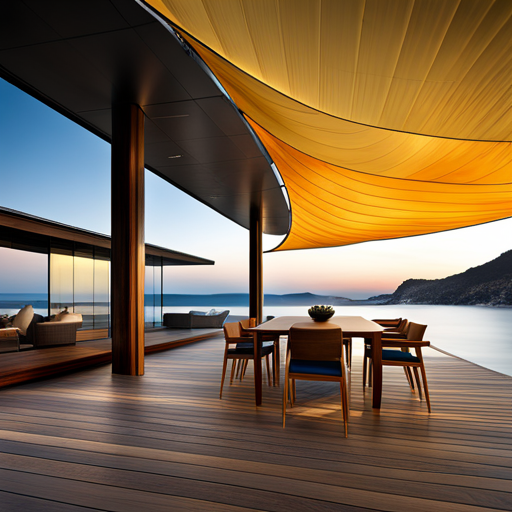
Retractable Shade Sails
Just like the name implies, you can retract these when you’re not using them. That way, you can either soak up the sun or find some shade whenever you want. They’re perfect for places where the weather can be unpredictable. But keep in mind, they might need a bit more TLC and won’t last as long as fixed shade sails.
Installing retractable shade sails can be complex, requiring precise understanding and proper tools. Unlike fixed sails, retractable models have moving parts and mechanisms for rolling the sail in or out. The initial setup involves mounting a roller mechanism to a sturdy structure and attaching the sail to it. Proper tensioning is crucial for functionality. Professional installation may be beneficial, and regular maintenance checks are necessary for durability and functionality.
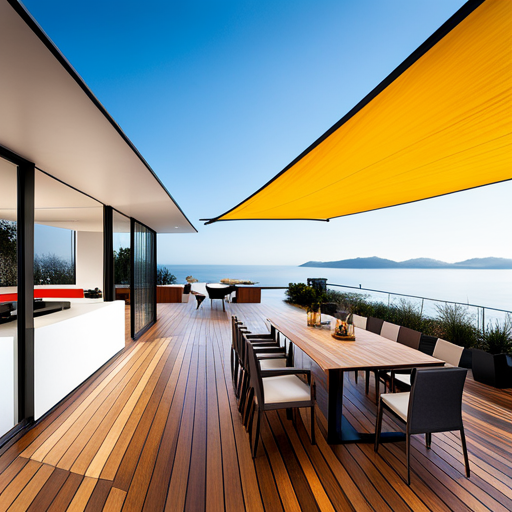
Custom Shade Sails
For those looking for a unique and personalized shading solution, custom shade sails are a great option. These can be designed to fit any space, shape, or size, and can be made with a variety of materials and colors to suit your specific needs and preferences. They may require more time and investment upfront, but the end result is a one-of-a-kind shade sail that perfectly fits your outdoor space.
Installing custom shade sails can be complex, requiring detailed planning and careful execution. It starts with precise measurements to ensure a perfect fit. Strong attachment points are essential to withstand adverse weather. Fabric selection considers UV protection, durability, and aesthetics. Installation requires expertise and specific tools for even tensioning and security. Professional installation may be recommended for complex customization.
If you need a custom shade sail for your outdoor area, I recommend you check out Covers & All. They make it easy. Just head over to their website. Then, select the shape and color you want, enter your desired dimensions, and they will take it from there. They will make a high-quality shade sail to your specifications and ship it right to your door.
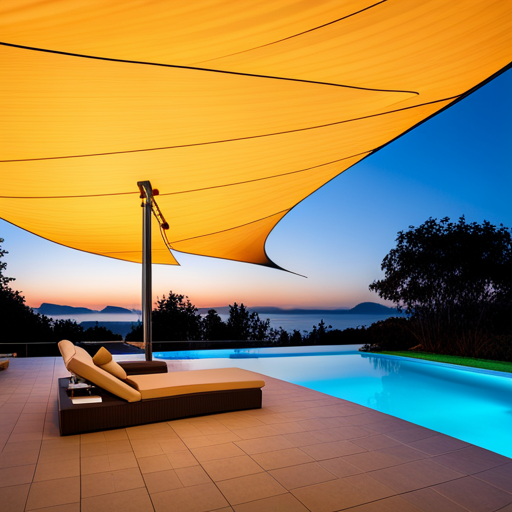
Shade Cloths
Shade cloths, also known as sunscreens, are an alternative to traditional shade sails. These are made with a porous material that allows air and water to pass through while still providing shade. They’re often used in commercial or agricultural settings, but can also be installed in residential areas. Shade cloths come in various levels of UV protection and can be easily removed for storage during the winter months.
While shade cloths offer flexibility, their installation can be intricate. Pre-installation planning involves careful measurements to ensure a perfect fit and proper shade coverage. Consider the fabric type and UV protection level based on the specific use case and location. Secure attachment to buildings or poles is crucial for weather resistance, which may require specific tools and hardware. With proper guidance or professional help, shade cloths can provide a practical and cost-effective shading solution for various settings.
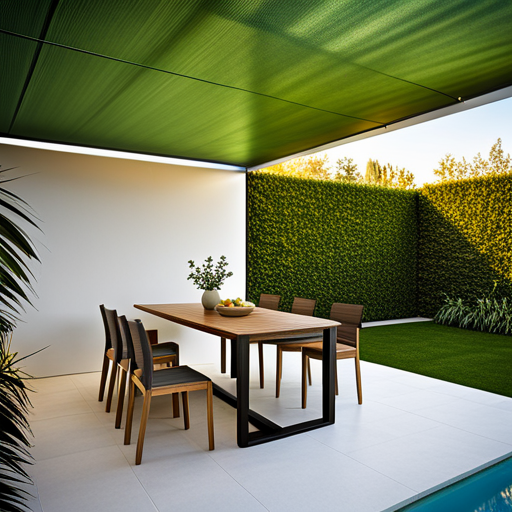
Veranda Shade Sails
Veranda shade sails are a popular choice for homeowners with a veranda or covered patio. These shade sails are typically installed on top of an existing structure, providing additional protection from the sun and rain. They can be made in various shapes and sizes to fit any space and add a stylish touch to your outdoor area.
Proper installation of veranda shade sails necessitates meticulous planning, precision, and accurate installation to ensure optimal functionality and long-lasting durability. Steps include precise measurements, selecting suitable materials, and proper tensioning. Professional installation services are available to ensure a smooth and successful setup. However, an experienced DIYer with the right tools can install them as well.

Portable Shade Sails
These are lightweight and easy to set up, making them perfect for on-the-go use. They’re great for providing shade at the beach, park, or any outdoor event.
While portable shade sails are easy to set up and mobile, their installation can pose challenges. It starts with selecting a suitable location, considering the sun’s path and desired shade. Securely anchor the sail to trees, posts, or vehicles using ropes or carabiners. Achieve the right tension – too loose, it may flap and cause damage; too tight, it could tear. With practice, even beginners can manage the installation.
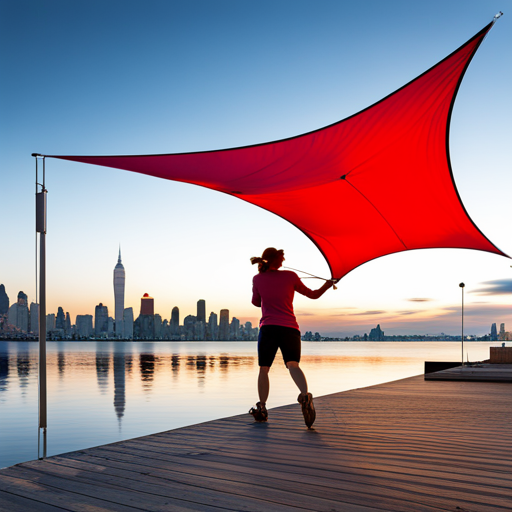
Waterproof Shade Sails
These are typically made with PVC material and are designed to protect from both sun and rain. They’re perfect for areas that experience frequent rainfall, allowing you to enjoy your outdoor space even during wet weather.
When considering waterproof shade sails, it is important to differentiate between “waterproof” and “water-resistant” materials. While both offer some degree of protection from rain, waterproof materials are completely impermeable and will not allow any water to seep through. Water-resistant materials, on the other hand, may repel water but are not completely impervious to it. Consider the climate and weather patterns in your area when deciding which type of shade sail is best for you.
Covers & All offers waterproof shade sails of various shapes and sizes as well as custom options.

Size and Shape Considerations
Evaluating the available space is key when choosing a shade sail. You need to consider both the size and shape of your patio. Ensure the sail will cover the area sufficiently without overwhelming the space. Using a tape measure, calculate the area you want to cover. Keep in mind the positions of the anchor points when deciding on the shape of the sail. Make sure to consider the space needed for the rope and turnbuckle between the anchor point and the shade sail. This space usually accounts for at least one foot.
Anchor Posts for Shade Sails
Posts for shade sails are an integral part of installation. They provide the necessary support and tension to keep the sails in place. You can choose from wooden, steel, or aluminum posts. Wooden posts blend well with natural surroundings but may not be as durable as metal ones. Steel posts are robust but can rust over time, while aluminum posts are rust-resistant and lightweight.
Maintenance and Care Tips
To extend the lifespan of your shade sails, regular maintenance is necessary. Here are some tips:
- Clean the sails periodically with mild soap and water to remove dirt and stains.
- During windy conditions, consider taking down the sail to prevent damage.
- Inspect the sail and hardware regularly for signs of wear and tear.
Conclusion
Carefully selecting the perfect shade sails for your patio can greatly enhance your outdoor experience. Whether you desire a cool haven to savor your morning coffee or a stylish space for evening gatherings, shade sails offer both practicality and aesthetic appeal. By considering factors such as material, size, shape, and installation process, you can effortlessly create a stunning and functional patio that will bring you joy for years to come. So, let the planning begin and transform your patio into the ultimate summer sanctuary.
Frequently Asked Questions
What type of material is best for shade sails?
Shade sails are usually made from high-density polyethylene (HDPE) or polyester, both of which offer excellent UV protection. HDPE is breathable and allows water to pass through, while polyester is water-resistant.
How do I install a shade sail?
Installation usually involves securing the corners of the sail to anchor points, which can be posts or parts of a building. The sail should be pulled tight to prevent flapping in the wind.
How often should I clean my shade sails?
A3: Regular cleaning can extend the lifespan of your shade sails. It is recommended to clean them with mild soap and water every few months to remove dirt and stains.
Can shade sails withstand strong winds?
A4: While shade sails are designed to withstand normal weather conditions, it is advisable to take them down during particularly windy conditions to prevent damage.
Q5: What is the life expectancy of a shade sail?
A5: The life expectancy of a shade sail depends on various factors such as material quality, installation method, and weather conditions. On average, a well-maintained shade sail can last anywhere from 5 to 10 years.
See Also:
A Guide to Design a Low-Budget DIY Outdoor Kitchen
Hanging Sunshade Sails Made Easy: Your Complete DIY Handbook
If you purchase through links on this site, we may earn a small commission. See our affiliate disclosure.


